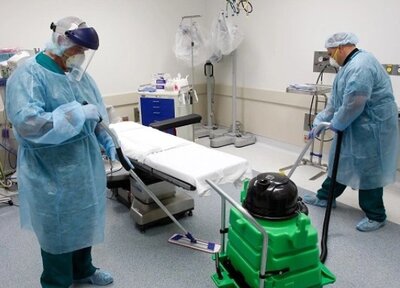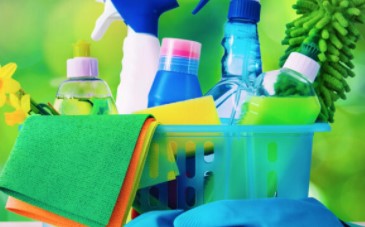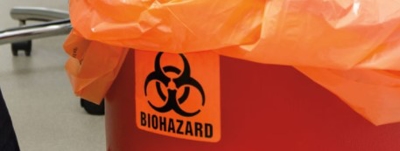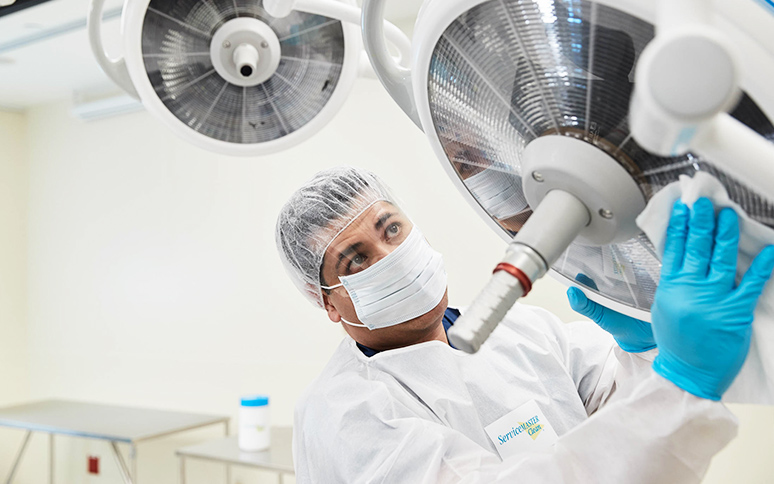Bloodborne Pathogens: Things to Know
Bloodborne pathogens are infectious microorganisms found in human blood that can cause serious diseases. Some of the most common bloodborne pathogens include:
- Hepatitis B (HBV)
- Hepatitis C (HCV)
- Human immunodeficiency virus (HIV)
Nurses, first responders, healthcare workers, and hospital environmental services staff can all be at risk of being exposed to bloodborne pathogens. Fortunately, there are several ways employers can help keep their staff safe. Learn the top things you need to know about bloodborne pathogens safety with information from the experts at ServiceMaster Clean.
How Healthcare Employees Can Be Exposed to Bloodborne Pathogens
All it may take is a simple prick of a needle to transfer pathogens. Other ways that healthcare workers can be exposed to pathogens includes both direct and indirect contact with bodily fluids. Some of these bodily fluids include:
- Blood
- Skin tissues
- Mucus
- Respiratory droplets transmitted by coughing, sneezing, or exhaling
- Vector-borne transmissions, meaning that a person's skin is penetrated by an infectious source
The Bloodborne Pathogens Standard
The Occupational Safety and Health Administration (OSHA) created a Bloodborne Pathogens standard to protect workers against the health risks of bloodborne pathogens. The requirements include exposure control plans, universal precautions, post-exposure follow-up, training, and more to help keep every healthcare worker safe. It also includes the Needlestick Safety and Prevention Act, which details more specific requirements for healthcare facilities to identify, evaluate, and implement safer medical devices across practices.
What Requirements Are Included in Osha's Bloodborne Pathogens Standard?
Workers who become exposed to bloodborne pathogens may be at risk of life-threatening injuries, which is why OSHA implemented a set of standards to help protect healthcare workers and other staff. The Bloodborne Pathogens standard outlines safeguards for employees who come into contact with bloodborne pathogens or other potentially infectious materials (OPIM). The standard requires employers to enact the following policies or procedures in their facilities:
1. Implement an Exposure Control Plan (ECP)
Employers must develop a written plan to minimize employees' exposure to bloodborne pathogens. The plan must include, among other requirements:
- A list of jobs in which every employee might be subject to exposure
- A list of jobs in which some employees might be subject to exposure
- A list of tasks those workers perform that may cause them to become exposed
- Procedures for how to evaluate any exposure incidents
- Methods of compliance, including: practice controls, housekeeping, decontamination procedures, and more
2. Update the Exposure Control Plan Every Year
Employers must reflect any changes that could affect employees' occupational exposure to bloodborne pathogens at least annually. Employers must also document how they have begun using safer medical devices to reduce occupational exposures, such as needleless systems, self-sheathing needles, and sharps disposal containers.
3. Provide Appropriate Personal Protective Equipment (PPE) to Workers
Employers must provide workers with gear such as gloves, masks, eye protection, and gowns to keep them protected while they're handling bloodborne pathogens. Employers must also repair and replace all gear as needed.
4. Provide Appropriate Vaccinations to Employees With Occupational Exposure
Employers must provide certain vaccinations, including the hepatitis B vaccination, to employees after each worker has undergone the proper amount of bloodborne pathogens training and within ten days of the worker's initial assignment.
While the above list features basic information about OSHA's Bloodborne Pathogens standard and Needlestick Safety and Prevention Act, you can find a comprehensive list of all requirements and guidelines on OSHA's website.
At ServiceMaster Clean, we know how important it is to lower the risk of transmitting bloodborne pathogens and other common pathogens in healthcare facilities. That's why we've created a comprehensive cleaning program that meets all the best practices and procedures published by the leading healthcare organizations. To help you reduce the spread of disease and bloodborne pathogens in your facility, call on us. Our janitorial services for healthcare industries provide industry-leading standards of clean to help keep both your patients and your employees safe.










